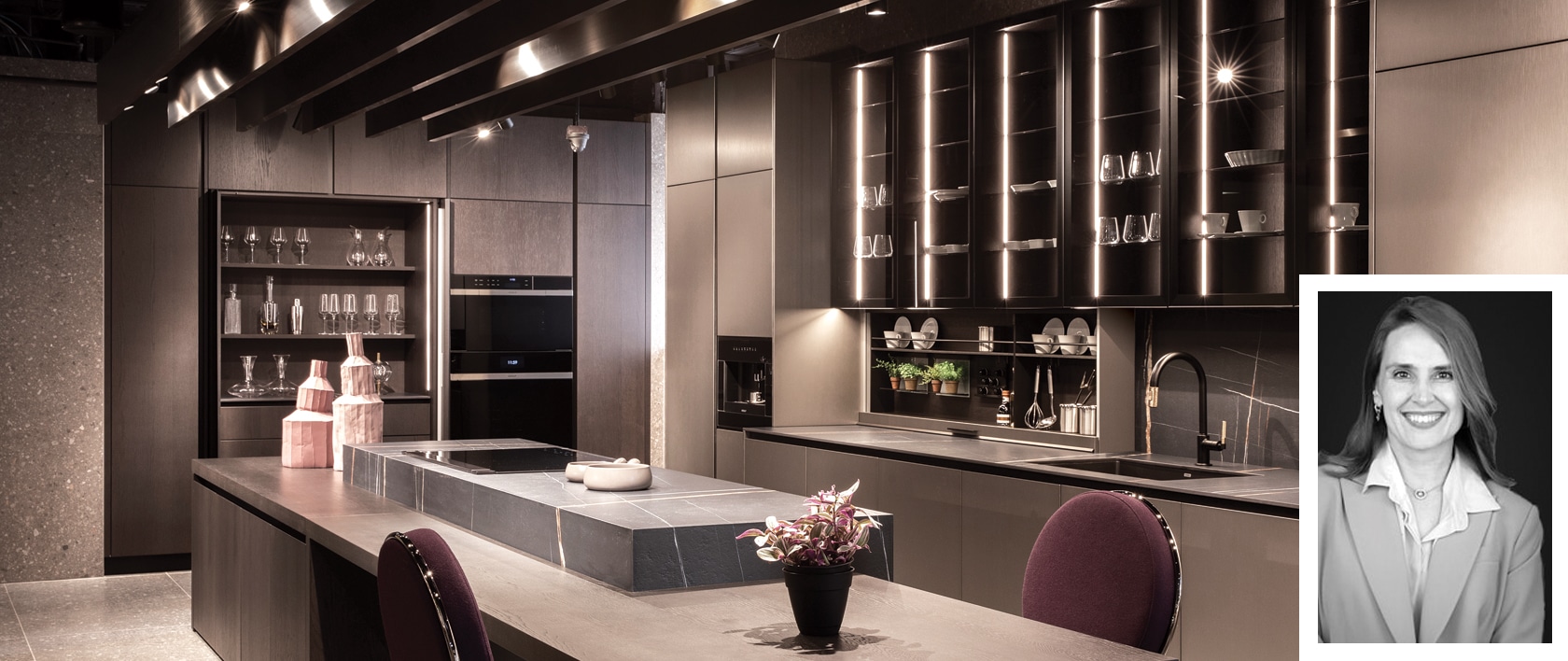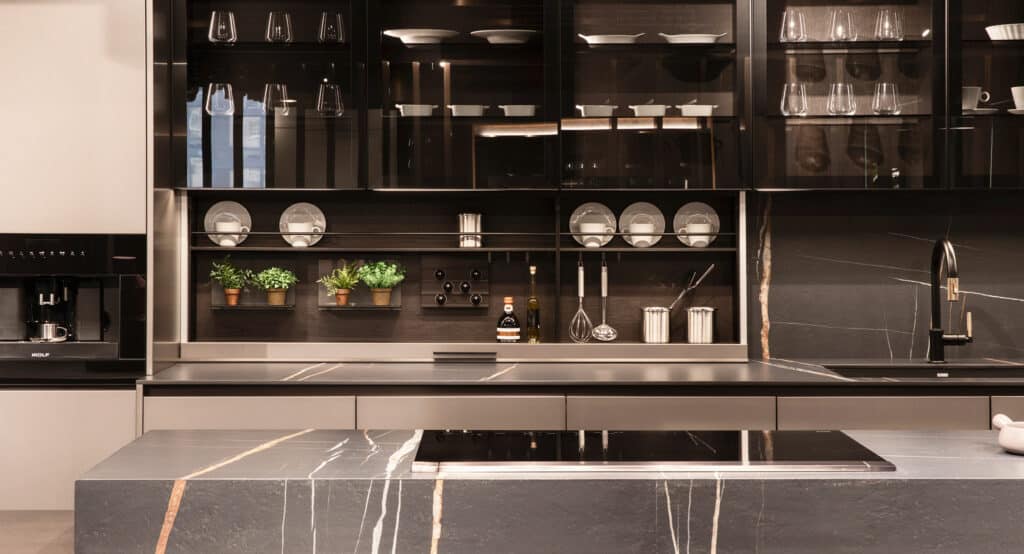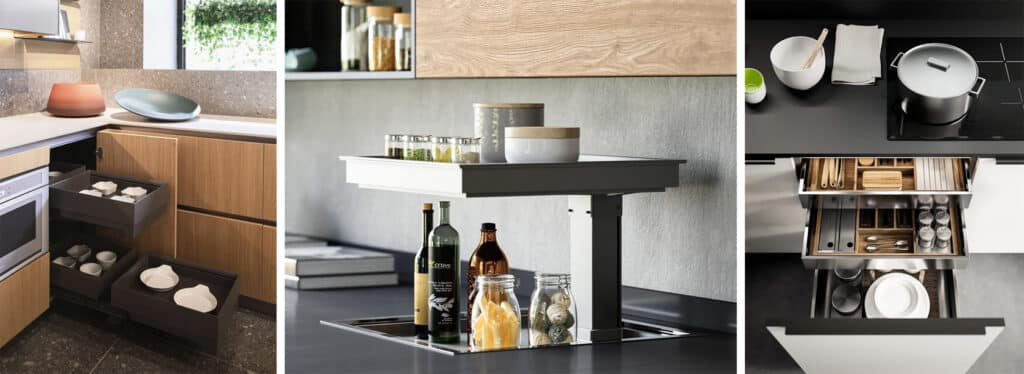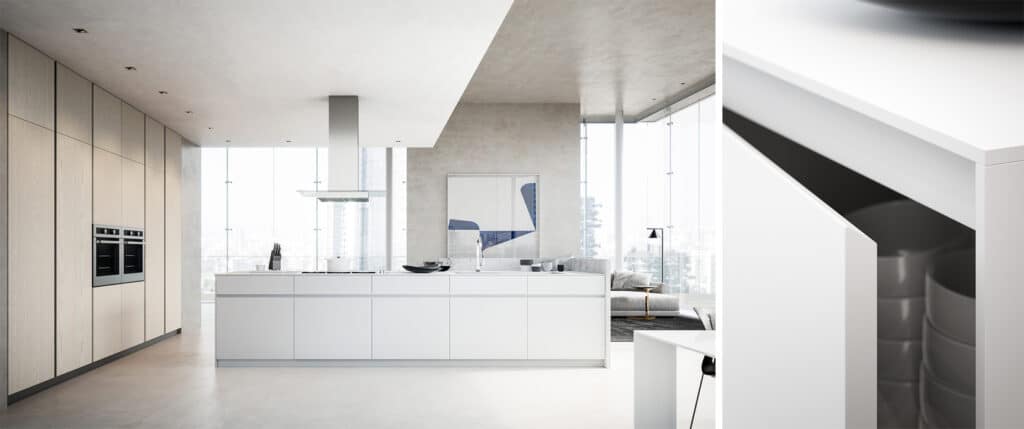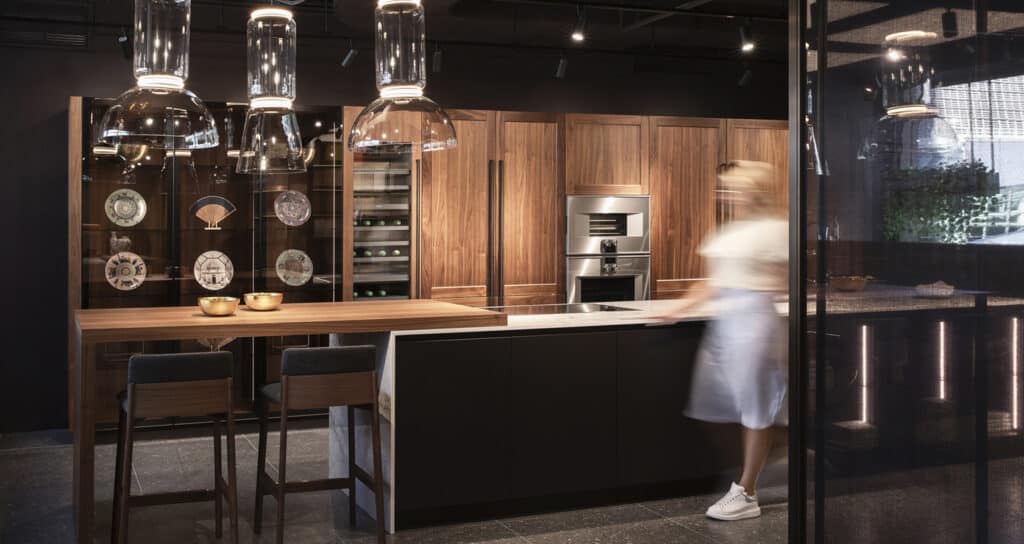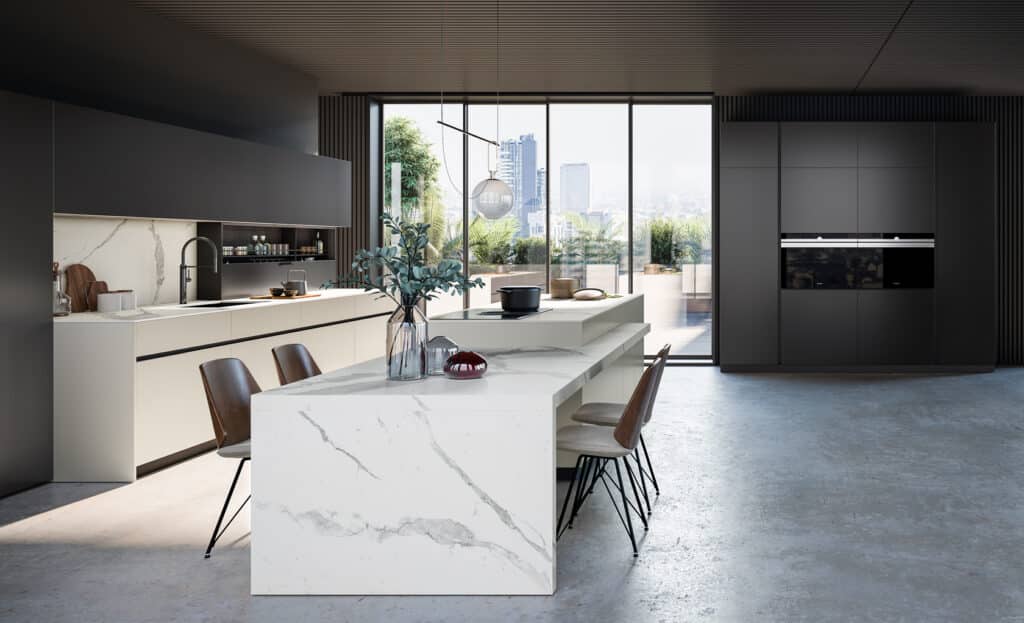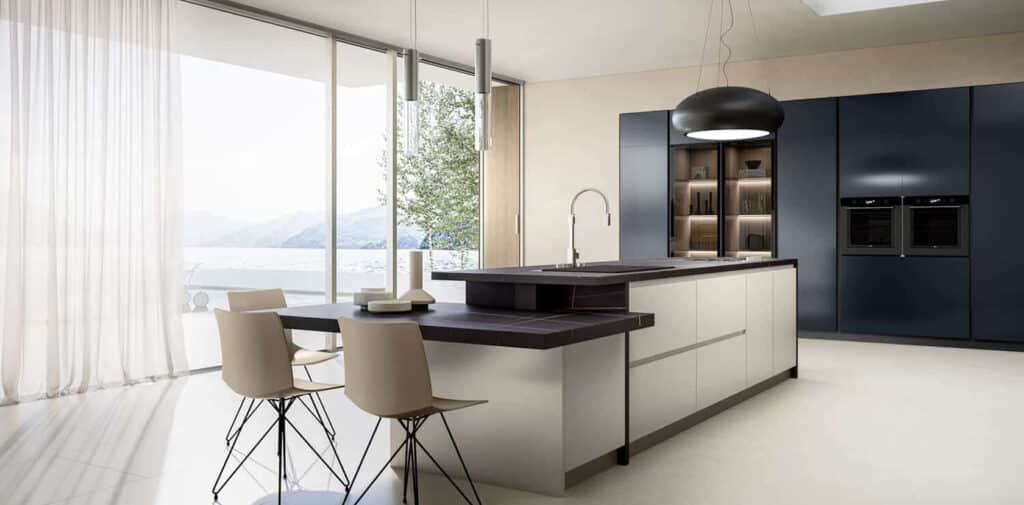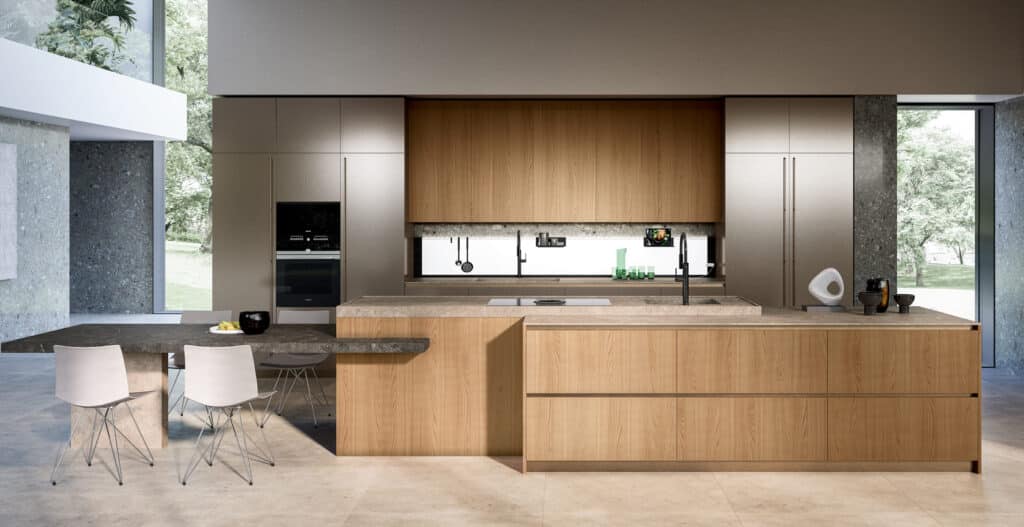Priscila Forster, Manager of the MandiCasa New York Flagship showroom, discusses the major trends she is seeing in luxury kitchen cabinets based on what clients are requesting.
Most In-Demand Kitchen Cabinetry Features
The top request from luxury clients is to maximize organization and have a “space for everything” while maintaining a clutter-free look. That means appliances integrated into the cabinets and options to hide or easily put away utensils, spices, small appliances and other items that always seem to be in the way.
MandiCasa offers many storage solutions for the luxury kitchen, all geared towards utilizing every inch of space:
- pocket-door pantry units with hidden surfaces, drawers, and accessorized panels;
- corner systems with double baskets set on L-shaped full-extraction rails;
- deep baskets with interior drawers;
- glassware holders;
- customizable organizers for flatware, cutlery, utensils, spices, foil rolls, bowls, plates, pots and pans;
- hidden storage systems for backsplash and countertops.
In order to make the most of the space, we spend a lot of time understanding how our clients like to use their kitchen, cook, and prep food. We want to know if they freeze a lot or prefer fresh produce, if they bake and roast or prefer to grill, how many gadgets and utensils they have, and how many people work in the kitchen at the same time. This information is crucial for us to optimize the design of pantry units, cabinets, and drawers.
Luxury Kitchen Cabinet Styles: Framed or Flat Doors?
Most of our clients and designers are looking for clean lines, so the most in-demand look is flat doors with little or no visible hardware. This means cabinets with an integrated channel that allows you to open drawers and doors without the need for handles.
Occasionally we see requests for more transitional designs. In those cases we use our Ligna cabinets, which feature a modern twist on the traditional shaker style with minimalist framed doors combined with flat doors for a crisp and fresh design. Adding handles gives the space a unique character while ensuring the look won’t become outdated.
Cabinet Colors and Finishes
Our luxury kitchen designs usually include lacquers or wood veneers or – most often – a combination of both, which creates a nice balance of tones and textures.
Cool tones top the wish list, regardless of the material. Neutral colors are always on trend, with whites and off-whites still being the most requested, followed by light grays and matte black.
With woods, the highest demand right now is for white oak, bleached oak, and light gray woods.
However, pops of color are becoming more common lately, especially shades of blue. Our best-seller is the Blu Petrolio micalized lacquer, a shimmery dark blue made with mica powder that produces a slightly pearl-like shine.
When clients want interesting accents to complement the neutral tones, the choice often goes towards our high-performance specialty lacquers, which have unique aesthetic properties:
- Carbonio and Rame,which resemble brushed stainless steel
- Bronze Lux,which reproduces the feel of antique liquid bronze
- Carbon, which uses a special manufacturing process to render a black surface with a cracked pattern.
How Technology Integrates With Luxury Kitchen Design
Obviously there is a lot of talk about the increased use of automation within the hardware of the cabinets, from electric assist opening to controlling cabinet lights via home automation apps. High-end European appliance brands offer touch-to-open systems without the need of handles, matching the streamlined look of the cabinets.
Another interesting way technology is impacting luxury kitchen design is by making it possible to manufacturing new materials, like the specialty lacquers I mentioned above. This adds to the variety of the available finishes and gives clients more customization options, opening up ideas for the kind of feel they want their kitchen space to have.
Technological advancements also benefit the environment and people’s health. Cabinet materials get greener as manufacturing processes improve and move towards zero waste and zero emissions. Our panels comply with the strictest formaldehyde emission restrictions, our lacquers use water-based non-toxic paints, our woods are sustainably sourced, and the glues in our cabinets are formaldehyde-free.
